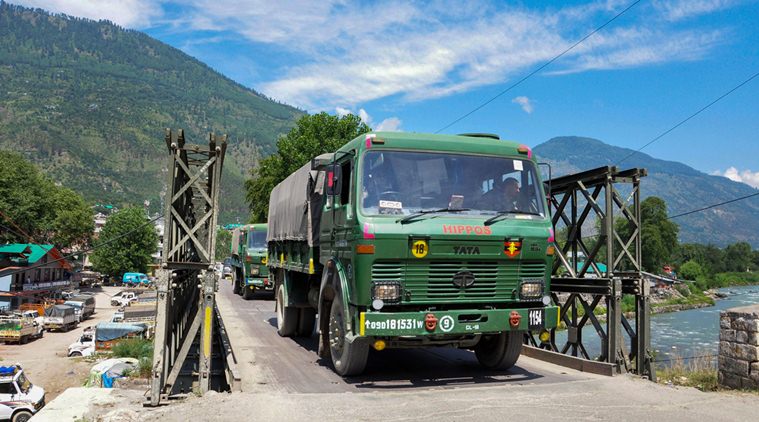
SOURCE: ENS
India’s ambassador to Beijing, Vikram Misri, reached out Wednesday to a key interlocutor in the Communist Party of China’s Central Committee to try and make headway in talks on resolving the crisis along the Line of Actual Control in Ladakh where the standoff between troops of the two countries enters its 100th day Thursday.
Misri met Liu Jianchao, Deputy Director of the Office of the CPC Central Committee Foreign Affairs Commission, and “briefed him on India’s stance vis-à-vis the situation on the borders in eastern Ladakh UT and overall bilateral relations”, the Indian embassy in Beijing said in a tweet Wednesday.
The Central Committee is a political body comprising top leaders of the Communist Party of China.
Officials said Liu wields influence within the CPC’s foreign affairs division, and can help convey the need to resolve the border situation at the political level.
Talks on disengagement of troops at friction points, especially in the Pangong Tso area, and de-escalation along the LAC have not made progress beyond a point. Both sides have positioned troops and weaponry along the boundary since early May.
It is learnt that New Delhi is looking at another round of official talks through an established diplomatic framework with Beijing in the coming week.
Official sources told The Indian Express that the fourth meeting of the Working Mechanism for Consultation and Coordination on India-China Border Affairs (WMCC) has been proposed but a date is yet to be confirmed by Beijing. The meeting is expected to take place next week.
The last two meetings of WMCC were followed by meetings at the level of the Corps Commanders. Sources said it was not clear if the next WMCC meeting will also be followed by talks at the level of the Corps Commander, which will be the sixth meeting at that level of senior commanders since tensions began on May 5 at Pangong Tso.
Meanwhile, the meeting at the level of the Division Commander held Sunday at Daulat Beg Oldie (DBO) to reduce tensions at the Depsang Plains failed to achieve a breakthrough in either de-escalation on either side of the LAC or restoration of patrolling rights to Indian soldiers who have been blocked from reaching five patrolling points on the Chinese side.
Besides five rounds of meetings at the level of the Corps Commander and three rounds of WMCC talks, Indian division and brigade commanders in Ladakh have also met their Chinese counterparts multiple times in the last 100 days. There has been a phone conversation between the two Foreign Ministers, besides a meeting between the two Special Representatives, Ajit Doval and Wang Yi.
While the final aim of New Delhi remains restoration of status quo ante as of April – it will involve disengagement from friction points, de-escalation by both armies and finally restoration of patrolling rights – the process of disengagement has not been completed at all the friction points in Ladakh, with no progress since the fourth round of Corps Commander talks on July 14.
Chinese soldiers continue to be on the Indian side of the LAC on the northern bank of Pangong Tso, including on the ridgeline, and the soldiers of the two armies are separated by around a kilometre at PP-17A in Gogra.
The Army has been preparing for a long haul at the LAC, including extended deployment during winter. This was stated by Chief of Defence Staff, General Bipin Rawat, during his testimony to Parliament’s Public Accounts Committee (PAC) on Tuesday, sources said.
The PAC, sources said, was told that around 40,000 soldiers were mobilised by China on the LAC in Ladakh and the mobilisation has been matched by the Indian side. The PAC was also informed that the Chinese undertook this mobilisation in the garb of a training exercise, from which troops were diverted to the LAC.






